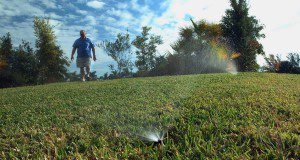Wastewater carries pathogens, nutrients (nitrogen and phosphorus), and trace organic chemicals that may be harmful to human health and ecosystem functioning. Thus, proper treatment of wastewater is crucial. While septic systems can be one means of effective wastewater treatment, there are some special considerations for their use in Florida because of unique geography and sandy soils. The purpose of this new 6-page publication of the UF/IFAS Department of Soil and Water Sciences is to explain the basics of how septic systems work and how they can affect springs water quality in Florida, with a special emphasis on potential N loading from septic systems. This document is intended for homeowners, the general public, and county, city, and other local personnel tasked with managing water quality in areas with septic systems. Written by Mary Lusk, Andrea Albertin, Whitney Elmore, William Lester, and James Moll.
https://edis.ifas.ufl.edu/ss693
Tag: Nitrogen
An Overview of Key Soil Nitrogen Cycling Transformations
Although nitrogen (N) is one of the most abundant elements in the biosphere, it is generally at levels that are limiting for optimum plant growth and crop production in Florida soils. To maintain adequate N levels in Florida soils without having detrimental environmental side effects, one must understand and manage N cycling transformations and processes. This new 5-page article, published by the UF/IFAS Department of Soil and Water Sciences, provides an overview of the N cycle by describing key N transformations that result in soils gaining or losing N. The biotic and abiotic processes that govern these transformations are described, as well as practical examples of these transformations in Florida soils. Written by Clayton J. Nevins, Sarah L. Strauss, and Patrick Inglett.
https://edis.ifas.ufl.edu/ss684
Sources and Transformations of Nitrogen in Urban Landscapes
With 80% of Florida’s residents living within 10 miles of the coast, Florida’s aquatic resources are directly affected by urbanization. The intent of this new 6-page publication of the UF/IFAS Department of Soil and Water Sciences is to describe the urban nitrogen cycle for a nontechnical audience. Ultimately, this document is intended for individuals working in urban environments and concerned about nutrient pollution and water quality issues, but do not have a technical background and want to improve their understanding of nitrogen cycling. Written by Alexander J. Reisinger, Mary G. Lusk, and Ashley R. Smyth.
https://edis.ifas.ufl.edu/ss681
The Fate of Nitrogen Applied to Florida Turfgrass
The quality of Florida’s surface and ground waters is of utmost importance to the flora and fauna living in them, as their growth is directly related to the amount of nutrients in these waters. In order to make informed decisions regarding nitrogen (N) applications to turfgrass, it is important to understand the N cycle in the soil/turfgrass system. The objective of this 8-page publication is to identify and describe the sources and potential fates of N applied to Florida turfgrass. Written by T.W. Shaddox and J.B. Unruh and published by the UF/IFAS Department of Environmental Horticulture, January 2018.
http://edis.ifas.ufl.edu/ep546



